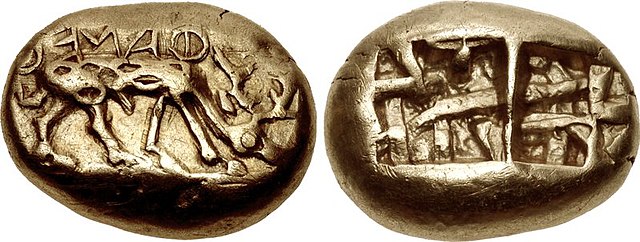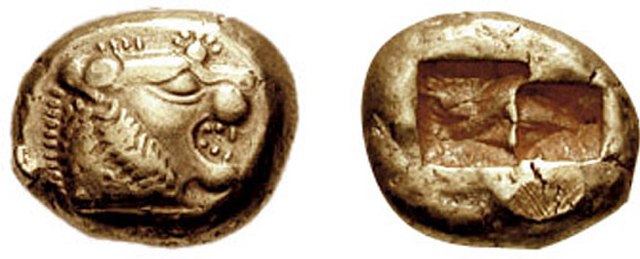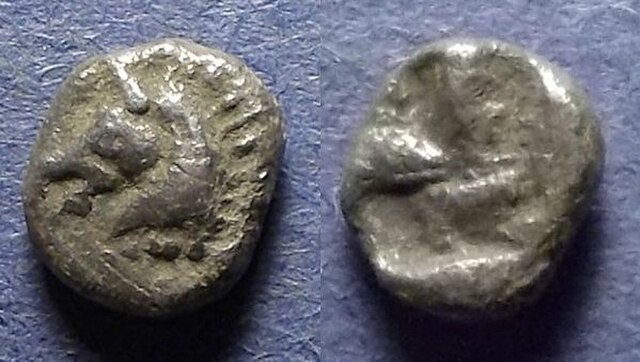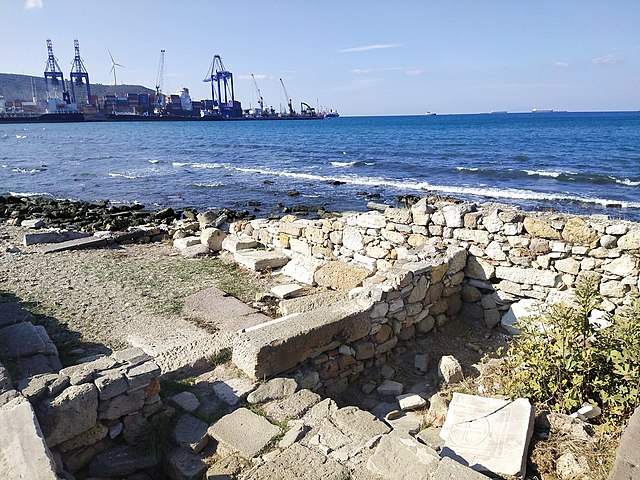The history of coins stretches back to the first millennium BC/BCE. Notable examples of coins include the Lydian Lion coins, Persian daric and siglos, Tong Bei, the dirham and gold dinar.
Electrum coin from Ephesus, 650-625 BC. Obverse: Stag grazing right, ΦΑΝΕΩΣ (retrograde). Reverse: Two incuse punches, each with raised intersecting lines.
610–560 BC Lydian electrum coin denominated as 1⁄3
Double-die style struck coin from Ancient India, c 304-232 BCE featuring an elephant on one face and a lion on the other.
Ionia, Uncertain city (possibly Kyme, Aeolis) 600-550 BCE, Hemiobol. Horse head, rough incuse
Cyme or Cumae was an Aeolian city in Aeolis close to the kingdom of Lydia. It was called Phriconian, perhaps from the mountain Phricion in Aeolis, near which the Aeolians had been settled before their migration to Asia.
Aeolis, Kyme; Tetradrachm; Silver; circa 165-140 BC; Obverse: Head of the Amazon Kyme right, wearing taenia; Reverse: Horse walking right, skyphos (one handled cup) below, ΚΥΜΑΙΩΝ left, ΣΕΥΘΗΣ (magistrate) in exergue, all within laurel-wreath; 34.2mm, 16.409g; Reference: SNG Von Aulock 1640; Oakley obv. die 59; Sg4183 var
Front: Cyme Ruins and Christian Cross, Back: Aliağa Port and Wind Mill
Nero & Diva Agrippina Jr Æ 15mm of Aeolis, Cyme. Circa 54-59 AD. QEON NERWNA KUMAIWN, young laureate head of Nero right / QEAN AGRIPPINAN, veiled head of Agrippina Jr right.
Statue of a young woman; late Hellenistic, 1st century BC, Cyme (Namurt).








